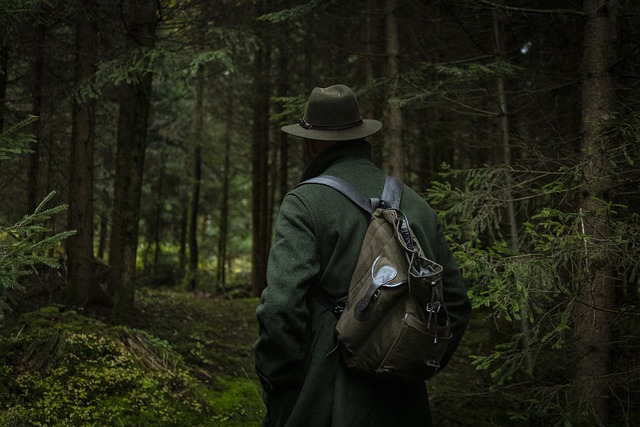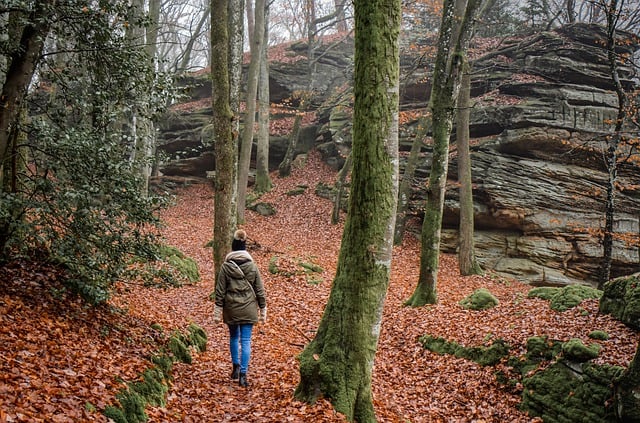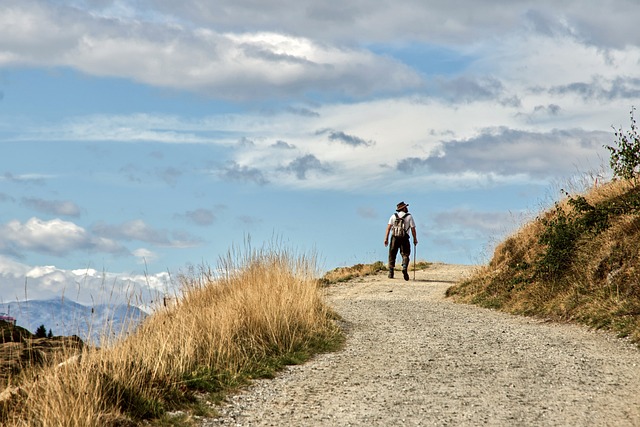
When venturing into the forest at night for a hike, having a reliable and durable flashlight specifically designed for trails is paramount. The best flashlights for hiking trails are constructed with high-grade materials to endure impacts and water resistance, ensuring they remain functional in challenging environments. They should feature adjustable brightness settings to manage battery life effectively, with high color temperatures for clear perception in open areas and warmer tones to minimize strain in denser woods. A flashlight with both focused and wide-angle beams will provide optimal illumination whether you're navigating long distances or need comprehensive peripheral lighting. Additionally, using reliable batteries that perform well in cold conditions, such as high-quality alkaline or lithium options, is crucial for maintaining a steady light source throughout your hike. Eco-friendly rechargeable batteries are also a sustainable choice. For those who value night vision preservation, some flashlights offer red or green lights to complement the main white beam. Including such a flashlight in your gear ensures you can confidently and safely navigate the darkness, transforming your forest hike into an enriching adventure with Flashlights For Hiking Trails.
When the sun dips below the horizon, forest trails transform under the cloak of darkness. A reliable flashlight for hiking trails becomes an indispensable tool for navigating these environments safely and with confidence. This article illuminates the critical aspects of selecting a high-quality flashlight that will enhance your outdoor experience. We’ll explore key features, evaluate lumens and beam distance for effective forest navigation, assess battery types for enduring hikes, and discuss LED technologies and color temperatures that respond to various trail conditions. Additionally, we’ll delve into the importance of durability and water resistance in trail flashlights to ensure they withstand the elements. With these insights, your next hike through the darkened woods will not only be safer but also more enjoyable. Flashlights for hiking trails are more than just a light source; they’re a vital piece of gear for any adventurer’s kit.
- Understanding the Importance of Quality Flashlights for Hiking Trails
- Key Features to Look for in a Hiking Trail Flashlight
- Evaluating Lumens and Beam Distance for Optimal Forest Navigation
- Battery Types and Their Impact on Your Hike's Success
- Durability and Water Resistance: The Rugged Side of Trail Flashlights
- LED Technologies and Color Tempertures for Different Trail Conditions
- Strategic Flashlight Usage to Enhance Safety and Enjoyment on Dark Trails
Understanding the Importance of Quality Flashlights for Hiking Trails

When venturing into forest trails under the cover of darkness, the reliability of your flashlight becomes paramount. A high-quality flashlight for hiking trails is not merely a tool but an indispensable companion that ensures safety and enhances the experience. The difference between a common flashlight and a quality one designed specifically for hiking trails can be stark, particularly in terms of durability, battery life, and light output. A durable flashlight, resistant to the elements such as water and shock, is less likely to fail when you need it most. Moreover, a long-lasting battery or rechargeable options with high energy efficiency will provide uninterrupted illumination for extended periods, which is crucial when navigating unfamiliar territories where help may not be immediately accessible.
The light output of flashlights for hiking trails also varies significantly. A model that offers a strong and focused beam can penetrate the darkness effectively, helping to spot hazards, markings, or wildlife along the path. Additionally, versatile lighting options, such as different modes including high, medium, and low beams, allow hikers to conserve battery life when full illumination isn’t necessary and to enhance their field of vision during critical moments. In essence, the quality of your flashlight can influence not just the success of your trail navigation but also your overall safety and peace of mind while enjoying the natural beauty that only a moonless night in the forest can reveal.
Key Features to Look for in a Hiking Trail Flashlight

When venturing into dark forest trails, a reliable flashlight for hiking trails becomes an indispensable tool. The right flashlight can transform a treacherous journey into a safer and more enjoyable experience. To ensure optimal visibility and safety, look for a flashlight with high lumen output. A bright beam of at least 200 lumens can illuminate long distances, helping you to navigate the trail ahead without stumbling over roots or rocks. Additionally, a variable light setting is advantageous; it allows you to adjust the brightness as needed, conserving battery life when full intensity isn’t necessary and intensifying the light when facing darker stretches of the path.
Durability is another key feature. A flashlight for hiking trails should be made of a robust material like aluminum or rubber-armored housing to withstand impacts and resist water exposure, ensuring it remains functional even in challenging conditions. Impact resistance is crucial, as a fall could otherwise render the device useless. Furthermore, consider a flashlight that offers both spot and flood beam options. This dual functionality enables you to focus on distant landmarks or widen your field of view for more immediate surroundings, making it easier to maneuver through the forest with confidence. Investing in a flashlight specifically designed for hiking trails will provide the necessary illumination and reliability to safely guide your way through the darkness of nature’s vast tapestry.
Evaluating Lumens and Beam Distance for Optimal Forest Navigation

When venturing into a dark forest, the right flashlight can make all the difference in your ability to navigate safely and efficiently. To determine the best flashlight for hiking trails within forested environments, one must consider two key specifications: lumens and beam distance. Lumens measure the total amount of light emitted from a source and is a direct indicator of brightness; higher lumen output means more light to illuminate your path. For densely wooded areas where underbrush might obscure your light, a flashlight with a minimum of 200 lumens can help pierce through the foliage and provide clear visibility on the trail ahead. However, it’s important to balance brightness with battery life; too many lumens can drain power quickly, leaving you in darkness when you need it most.
Beam distance is another critical factor for forest navigation. This specification indicates how far the light can reach in a straight line from the flashlight’s source. A long-distance beam is crucial for seeing obstacles, wildlife, and potential trail markers over long distances. Look for flashlights with a beam distance of at least 150 yards to ensure you can spot hazards and navigate confidently. Additionally, consider a model with a focusable beam, allowing you to adjust the spread of light depending on your proximity to objects or changes in the trail’s terrain. Flashlights for hiking trails should ideally offer both high lumens and an extended beam distance to provide a balance between illumination and range, ensuring that your hike through the forest remains safe and enjoyable.
Battery Types and Their Impact on Your Hike's Success

When embarking on a hike through dark forest trails, the reliability of your flashlight can be the difference between a pleasant excursion and a challenging one. The type of battery your flashlight utilizes plays a pivotal role in determining this reliability. Alkaline batteries, while commonly used, offer a steady but not overly bright light, which might not suffice for navigating potentially treacherous trails at night. They also have a limited lifespan, which could leave you in the dark when you need it most. For a more consistent and powerful illumination, rechargeable batteries or high-quality lithium options are preferable. These provide brighter beams for longer periods, which is crucial when you’re trying to identify obstacles or ensure your path is clear of wildlife encounters. The impact of battery choice on your hike’s success cannot be overstated; investing in flashlights for hiking trails equipped with durable batteries can significantly enhance your experience, ensuring that your light source remains steady throughout the journey. Additionally, considering the environmental impact and sustainability aspect, rechargeable batteries are an eco-friendly choice that can reduce waste and minimize the need for frequent battery replacements during long hikes. Opting for flashlights with such batteries ensures you’re prepared for extended exploration in the darkest of forest trails.
Durability and Water Resistance: The Rugged Side of Trail Flashlights

When venturing into the unpredictable environments that forest trails present, durability and water resistance are paramount in a flashlight designed for hiking. These rugged features ensure that your light source remains reliable under the most challenging conditions. High-quality flashlights for hiking trails often feature robust construction with impact-resistant materials such as aircraft-grade aluminum or hardened polymer, capable of withstanding the rigors of trekking over uneven terrain. This resilience is complemented by a water-resistant design, safeguarding the light from the elements when you’re navigating through wet underbrush or unexpected rain showers. Many models are rated with an Ingress Protection (IP) code, indicating their level of protection against intrusion from foreign bodies like dust and water. For instance, a flashlight with an IPX-8 rating can be submerged in water up to a certain depth, making it an indispensable tool for hikers who value the safety and reliability of their gear on the trails. Whether it’s the steady beam cutting through the dusk or the assurance that your flashlight will function after an accidental drop or encounter with moisture, these features are crucial for an uninterrupted and safe outdoor adventure. Flashlights for hiking trails thus serve as a testament to the importance of integrating advanced technology and thoughtful design to cater to the demanding requirements of backcountry exploration.
LED Technologies and Color Tempertures for Different Trail Conditions

When venturing into forest trails under the cover of darkness, the reliability and performance of your flashlight become paramount. Flashlights for hiking trails equipped with LED technologies offer unparalleled efficiency and durability, which are essential for such endeavors. Advanced LEDs provide brighter beams with less energy consumption compared to traditional bulbs. They are also more resistant to shock and vibration, making them ideal for the rigorous conditions one might encounter on a trail.
Choosing the right color temperature for your flashlight can significantly enhance visibility and comfort in various environmental conditions. For open forest areas where distance perception is crucial, high color temperatures (around 5000K and above) emit a cool white light that can help to discern objects far away. In dense, wooded areas with lower light levels, a warmer light (2700K to 4000K) might be more comfortable and efficient, reducing eye strain and providing a clearer view of immediate surroundings. Flashlights for hiking trails that offer adjustable color temperatures can cater to different scenarios, offering versatility for the user to adapt their light output to the trail’s characteristics and their specific needs throughout the journey.
Strategic Flashlight Usage to Enhance Safety and Enjoyment on Dark Trails

When venturing into the dimly lit recesses of forest trails, the right flashlight becomes an indispensable tool for both safety and enjoyment. Selecting a high-quality flashlight designed specifically for hiking trails is paramount; these models often feature robust construction, reliable durability, and a bright beam that can pierce through the densest underbrush. The intensity of the light should be adjustable, allowing hikers to conserve battery life when full illumination isn’t necessary, and to enhance visibility in darker areas without blinding themselves or disrupting wildlife. Additionally, consider flashlights with a focused beam for long-distance lighting needs, or a wide-angle setting for broader peripheral coverage. A durable, waterproof model ensures that your light source remains operational even in wet conditions. Strategic placement of the flashlight, such as holding it ahead and slightly off the path, can help to avoid disorientation from direct glare. By using flashlights for hiking trails thoughtfully and effectively, hikers can navigate with confidence, making their forest expedition safer and more pleasant.
Furthermore, the choice of batteries or rechargeable power sources is also critical. High-quality alkaline or lithium batteries can offer consistent performance in colder temperatures, a common occurrence in forested areas. Rechargeable options, on the other hand, are eco-friendly and cost-effective over time. The light’s beam color should be considered as well; while white light is most effective for seeing clearly, some flashlights offer red or green lights that can preserve night vision and reduce glare when used in conjunction with the main white beam. Incorporating a flashlight into your hiking gear checklist ensures you’re prepared to handle the challenges of dark trail conditions, transforming an uncertain trek into an adventure filled with wonder and discovery.
When venturing into the shadowed embrace of a forest trail, the right flashlight becomes an indispensable ally. A high-quality hiking trail flashlight, with its superior lumens and beam distance, not only ensures your path is illuminated but also amplifies the natural beauty that surrounds you. Selecting a reliable model, powered by the most efficient batteries, and boasting advanced LED technologies tailored to various light temperatures, offers both safety and an enriched experience. As daylight wanes or forest shadows deepen, strategic use of your flashlight for hiking trails transforms darkness into a manageable companion, allowing you to confidently navigate the wilderness with ease. Investing in a robust, water-resistant flashlight is a decision that could make all the difference on your next outdoor adventure.







